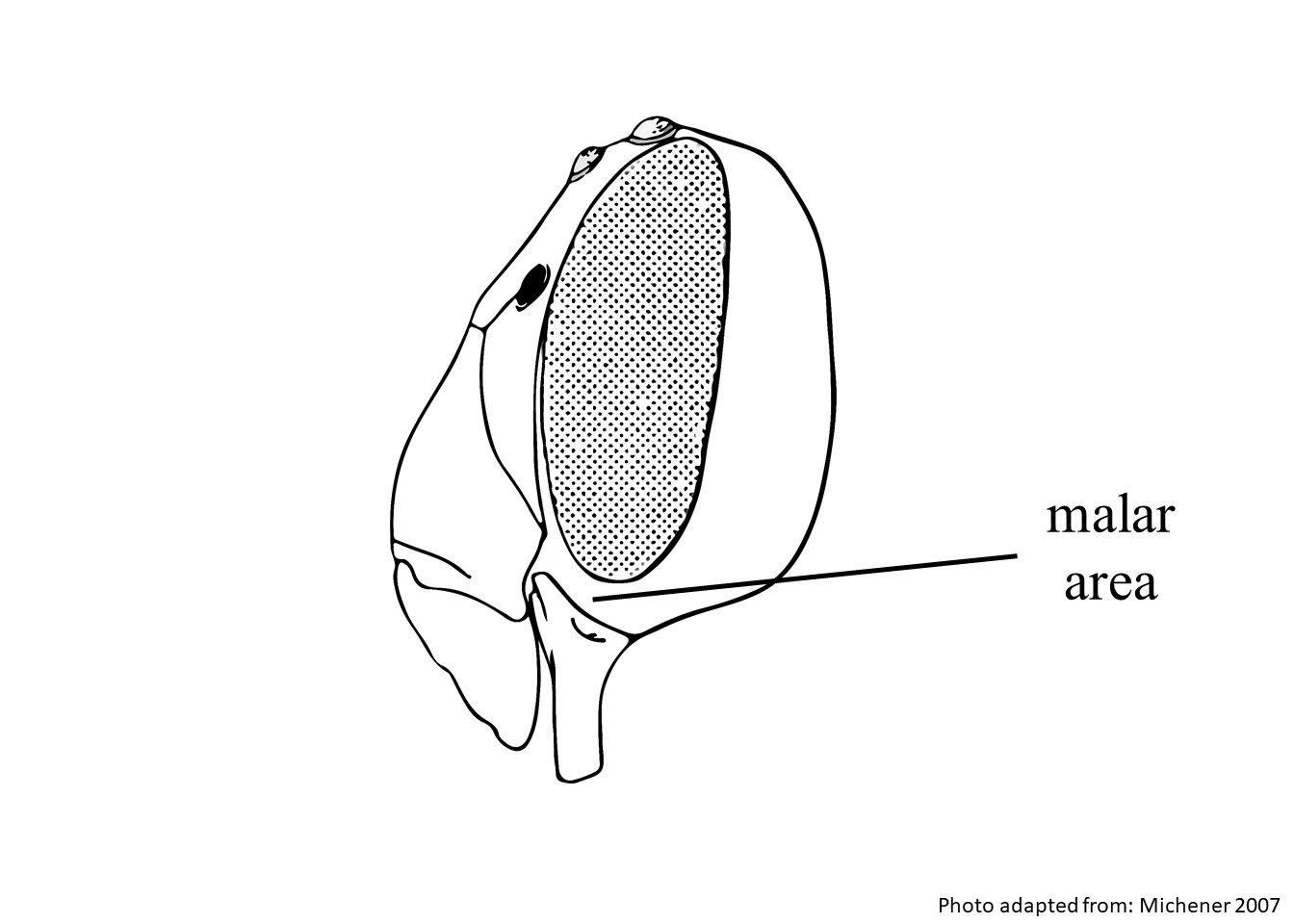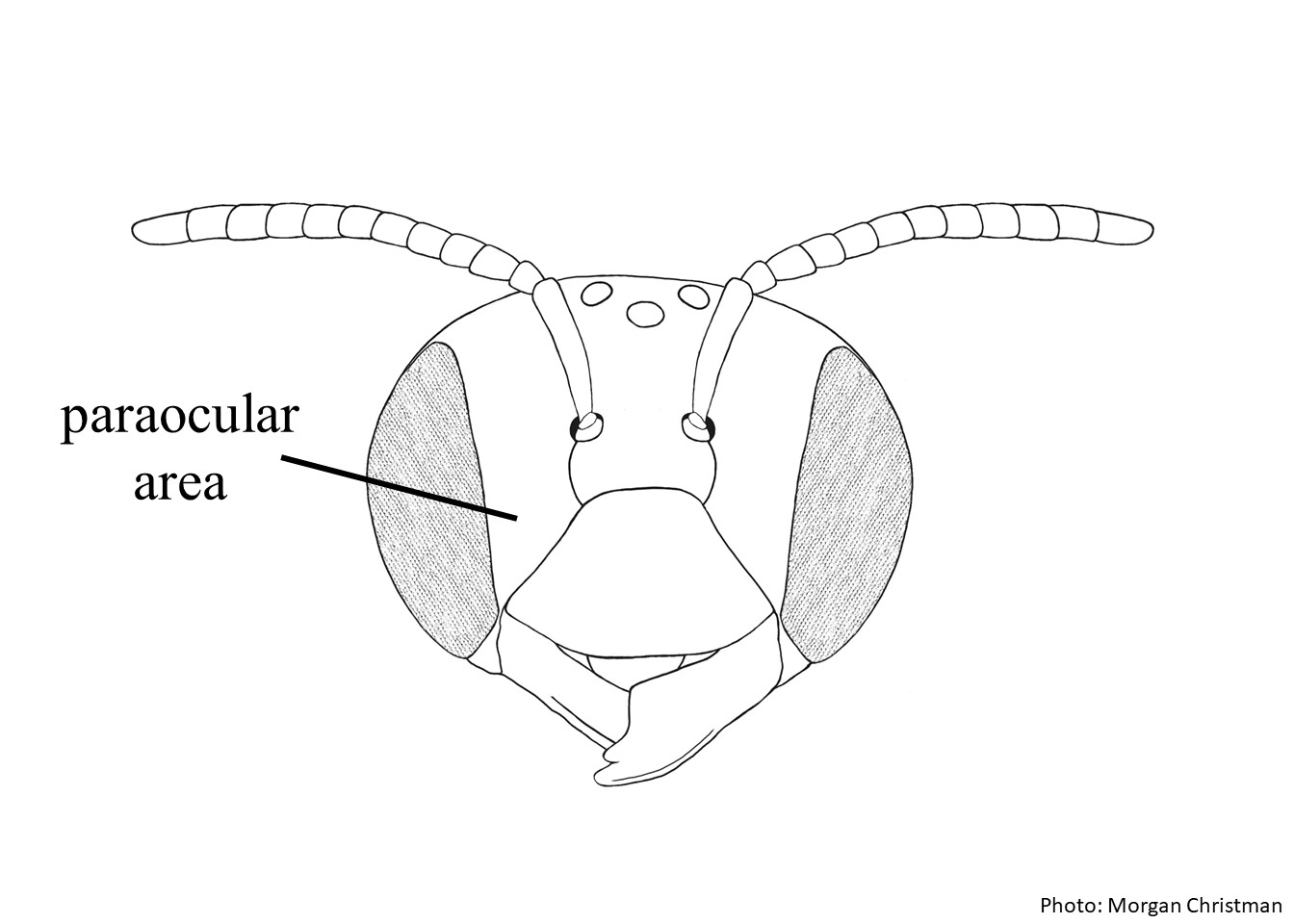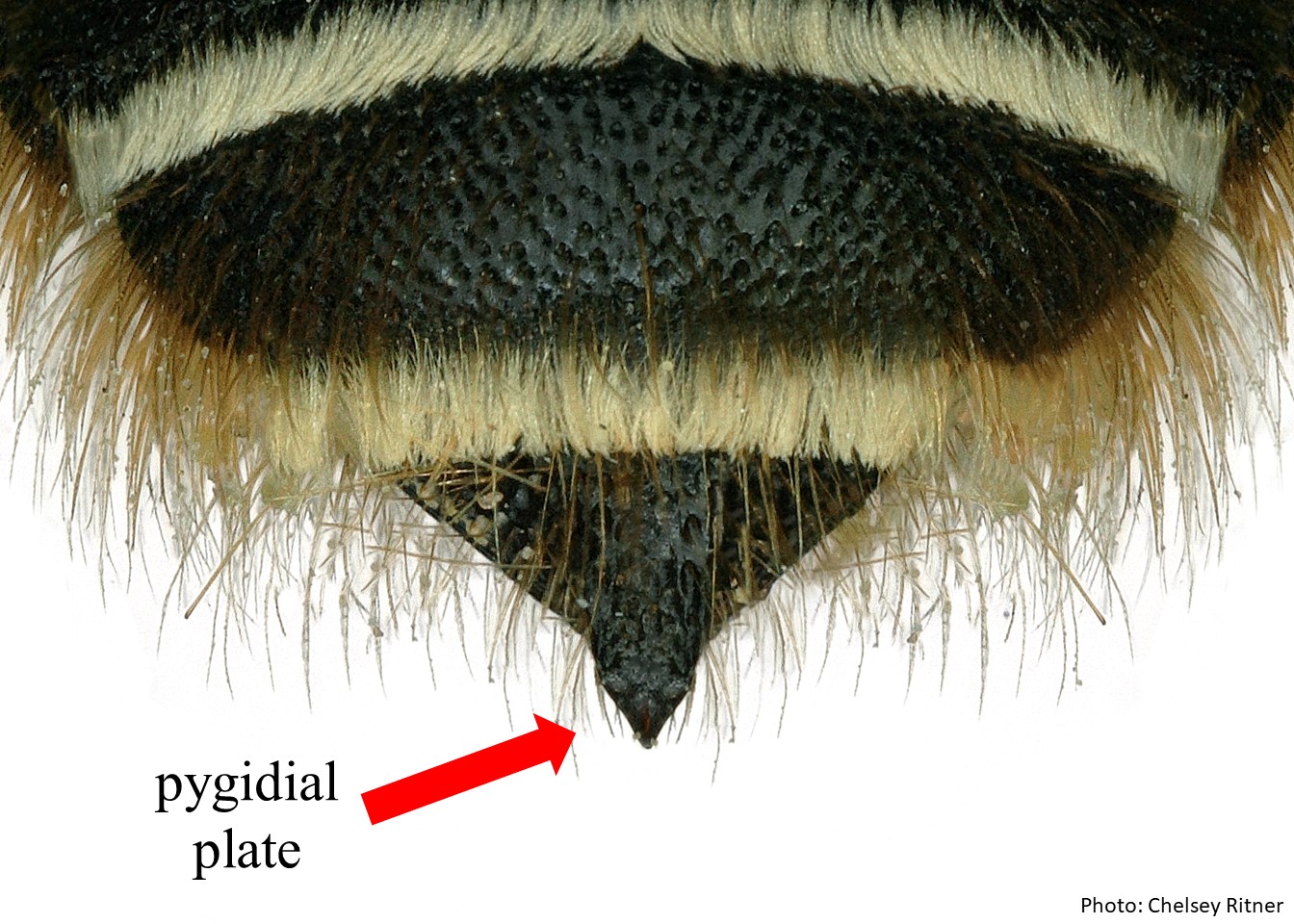Family: Apidae
Subfamily: Xylocopinae
Tribe: Xylocopini
Genus: Xylocopa
Subgenus: Xylocopoda, Hurd and Moure 1963Hurd and Moure 1963:
Hurd, P.D. and J.S. Moure. 1963. A Classification of the Large Carpenter Bees (Xylocopine) (Hymenoptera: Apoidea). University of California Publications in Entomology (Vol. 29). Berkeley and Los Angeles: University of California Press, 365 pp.
Common name: Carpenter bee
Xylocopa (Xylocopoda) are elongate, small to medium sized bees, 10 – 18 mm in length, with brown to black integumentintegument:
a tough, protective outer layer
. Males have almost entirely pale to brown pubescencepubescence:
short, fine hair
and females have primarily black pubescencepubescence:
short, fine hair
with pale, brown, or red pubescencepubescence:
short, fine hair
on the thorax and last abdominal segments. Their wings are light brown with weak iridescent reflections (Hurd and Moure 1963Hurd and Moure 1963:
Hurd, P.D. and J.S. Moure. 1963. A Classification of the Large Carpenter Bees (Xylocopine) (Hymenoptera: Apoidea). University of California Publications in Entomology (Vol. 29). Berkeley and Los Angeles: University of California Press, 365 pp.). This subgenus is rare and poorly documented (Schlindwein et al. 2003Schlindwein et al. 2003:
Schlindwein, C., Schlumpberger, B., Wittmann, D. and Moure, J.S., 2003. O gecirc;nero Xylocopa Latreille no Rio Grande do Sul, Brasil (Hymenoptera, Anthophoridae). Revista Brasileira de Entomologia , 47 , pp.107-118.).
Xylocopa (Xylocopoda) contains 2 species, Xylocopa elegans and Xylocopa madida (Hurd and Moure 1963Hurd and Moure 1963:
Hurd, P.D. and J.S. Moure. 1963. A Classification of the Large Carpenter Bees (Xylocopine) (Hymenoptera: Apoidea). University of California Publications in Entomology (Vol. 29). Berkeley and Los Angeles: University of California Press, 365 pp.; Michener 2007Michener 2007:
Michener, C.D. 2007. The Bees of the World (2nd ed.). Johns Hopkins University Press, Baltimore and London, 953 pp.).
Xylocopa (Xylocopoda) occurs in Brazil (Minas Gerais and Paraná) and Argentina (Misiones) (Michener 2007Michener 2007:
Michener, C.D. 2007. The Bees of the World (2nd ed.). Johns Hopkins University Press, Baltimore and London, 953 pp.).

Distribution map generated by Discover Life -- click on map for details, credits, and terms of use.
Floral associations are unknown.
(modified from Hurd and Moure 1963Hurd and Moure 1963:
Hurd, P.D. and J.S. Moure. 1963. A Classification of the Large Carpenter Bees (Xylocopine) (Hymenoptera: Apoidea). University of California Publications in Entomology (Vol. 29). Berkeley and Los Angeles: University of California Press, 365 pp.)
 short.
short. abruptly and angularly raised on lower portion.
abruptly and angularly raised on lower portion. with subapicalsubapical:
with subapicalsubapical:Xylocopa (Xylocopoda) are most similar to X. (Cirroxylocopa). X. (Xylocopoda) males can be distinguished from all other subgenera by the high lamellatelamellate:
thin, plate-like, often somewhat translucent structure
ridge on the hind tibiatibia:
the segment of the leg, between the femur and the tarsus. Females can be distinguished by the raised, angulateangulate:
forming an angle rather than a curve
lower portion of the paraocular areaparaocular area:
the area extending along the sides of the face parallel to the eye
 (Hurd and Moure 1963Hurd and Moure 1963:
(Hurd and Moure 1963Hurd and Moure 1963:
Hurd, P.D. and J.S. Moure. 1963. A Classification of the Large Carpenter Bees (Xylocopine) (Hymenoptera: Apoidea). University of California Publications in Entomology (Vol. 29). Berkeley and Los Angeles: University of California Press, 365 pp.).
Nesting behaviors are unknown.
There are no known invasives.
Hurd, P.D. and J.S. Moure. 1963. A Classification of the Large Carpenter Bees (Xylocopine) (Hymenoptera: Apoidea). University of California Publications in Entomology (Vol. 29). Berkeley and Los Angeles: University of California Press, 365 pp.
Keasar, T. 2010. Large Carpenter Bees as Agricultural Pollinators. Psyche doi:10.1155/2010/927463.
Michener, C.D. 2007. The Bees of the World (2nd ed.). Johns Hopkins University Press, Baltimore and London, 953 pp.